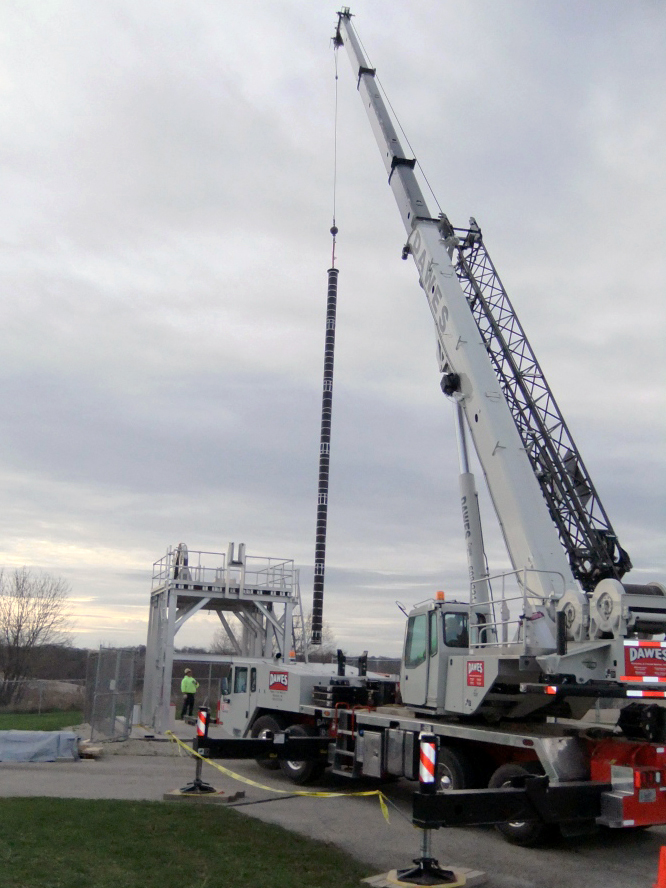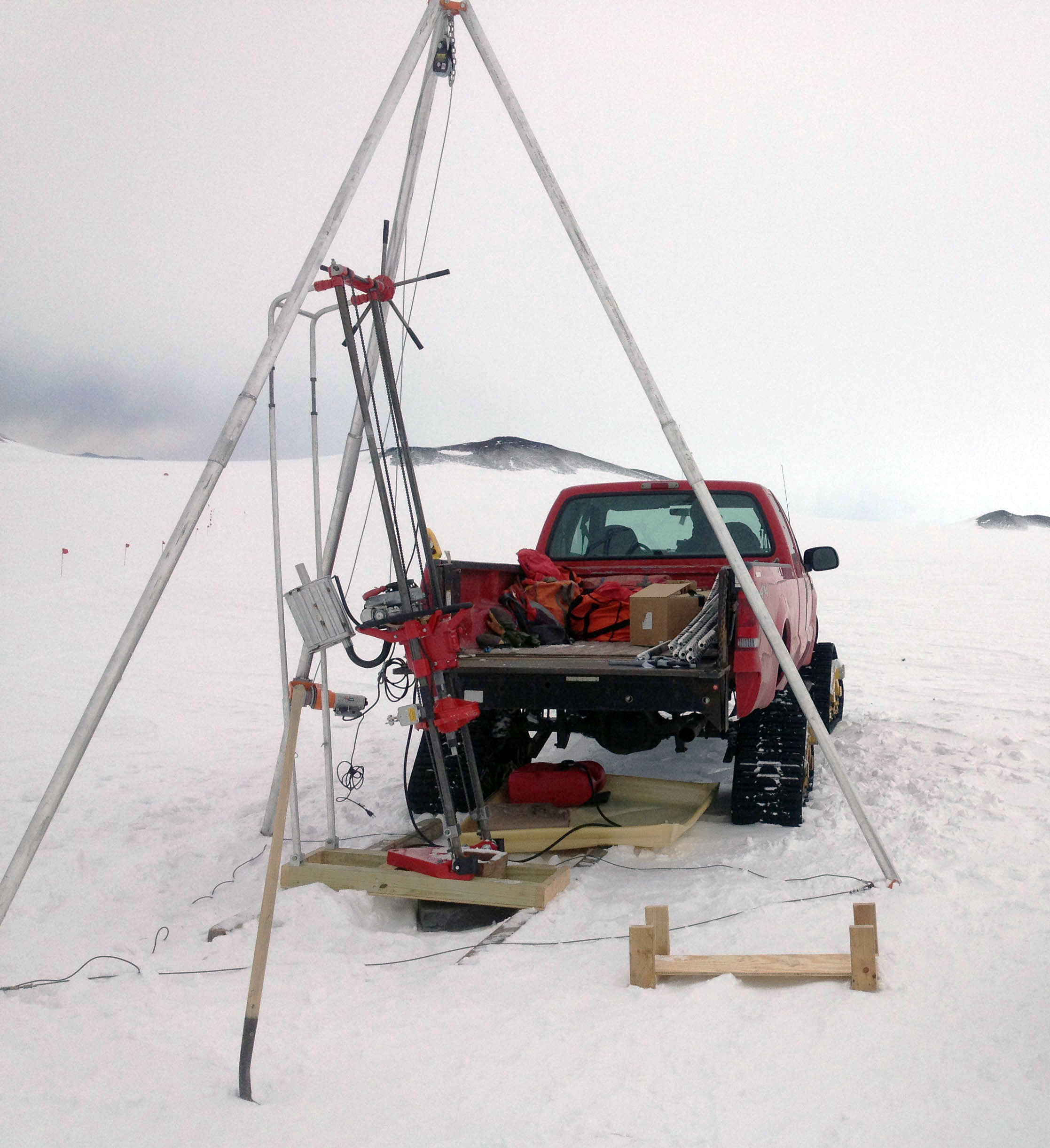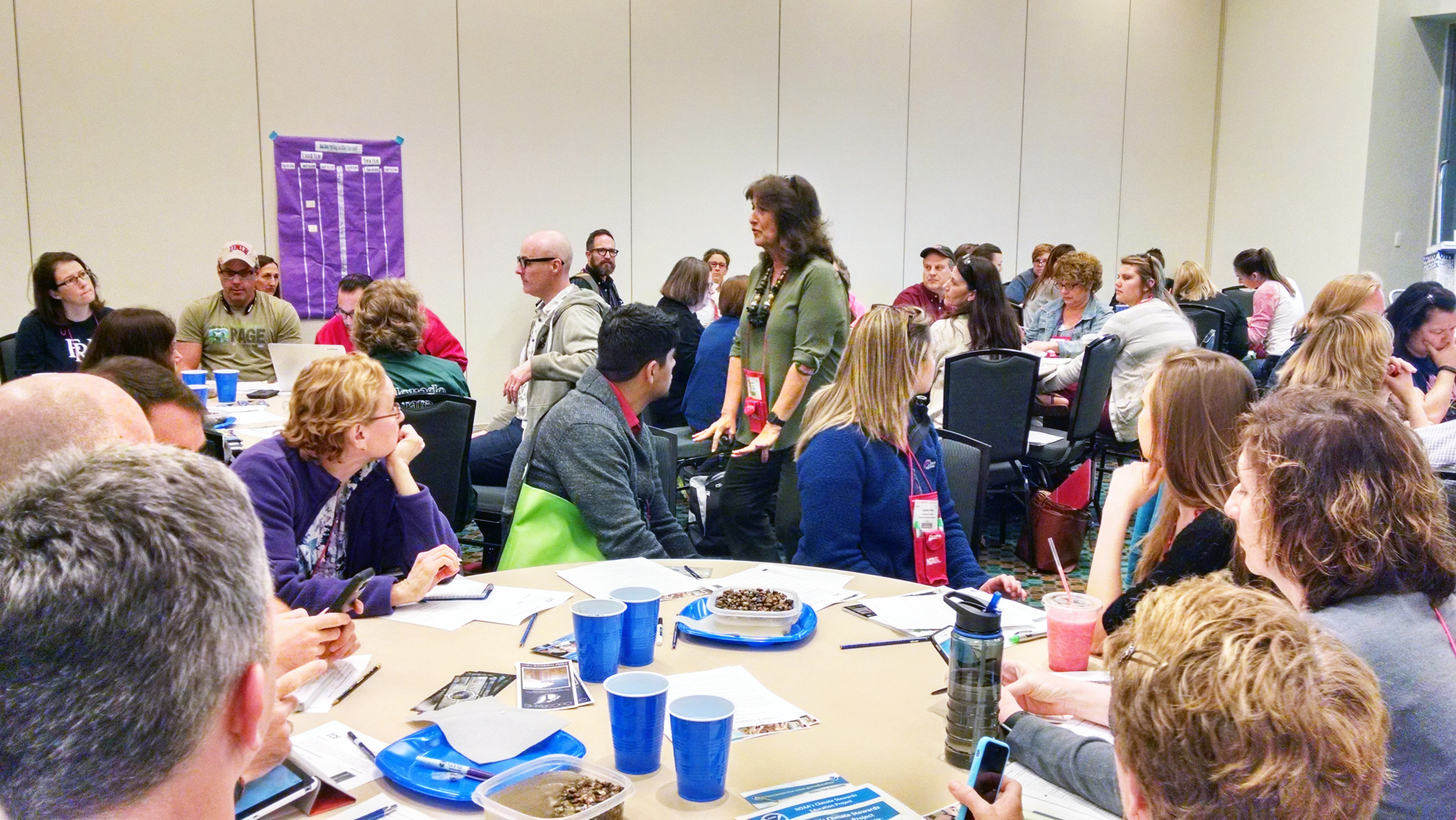During the Second Quarter, IDDO Project Manager and Lead Mechanical Engineer, Chris Gibson, brought the concept of a temporary ice well testing facility to life. Using a cased hole in the ground on the University of Wisconsin Physical Sciences Lab (PSL) property just a 20-minute drive outside of Madison, Gibson designed a way to insert a smaller casing within the larger hole, run a chilled glycol loop between the two and fill the center casing with a column of ice, concrete, granite and mixed media, all to allow for a thorough test of the new Agile Sub-Ice Geological (ASIG) Drill, which is planned for Antarctic deployment in 2016-2017. The test setup provided IDDO engineers with an invaluable opportunity to test the drill rig, make quick modifications with new parts through local and trusted vendors, and allowed for engineer and driller familiarization with the unit. IDDO welcomed several visitors to the test site, including personnel from IDPO, ASC, IDDO and the PI of the first funded project making use of the drill. While the well setup was only temporary for this test, its success serves as an excellent proof of concept for the installation of a more permanent ice well and testing/training facility, should funds allow in the future. Testing in Madison is far less expensive than test seasons in either Greenland or Antarctica, so IDDO will continue to explore this prospect in the future.
The ASIG Drill test site at the UW PSL. At left, the ASIG Drill rig sits on a wooden deck with hydraulic engines in blue covers and wire-line tower visible above pre-existing aluminum platform; at center, a 500 gallon (1890 L) diesel wagon; at right, the drill tent housing the chiller; frosted glycol supply hoses visible in foreground. Credit: Chris Gibson




